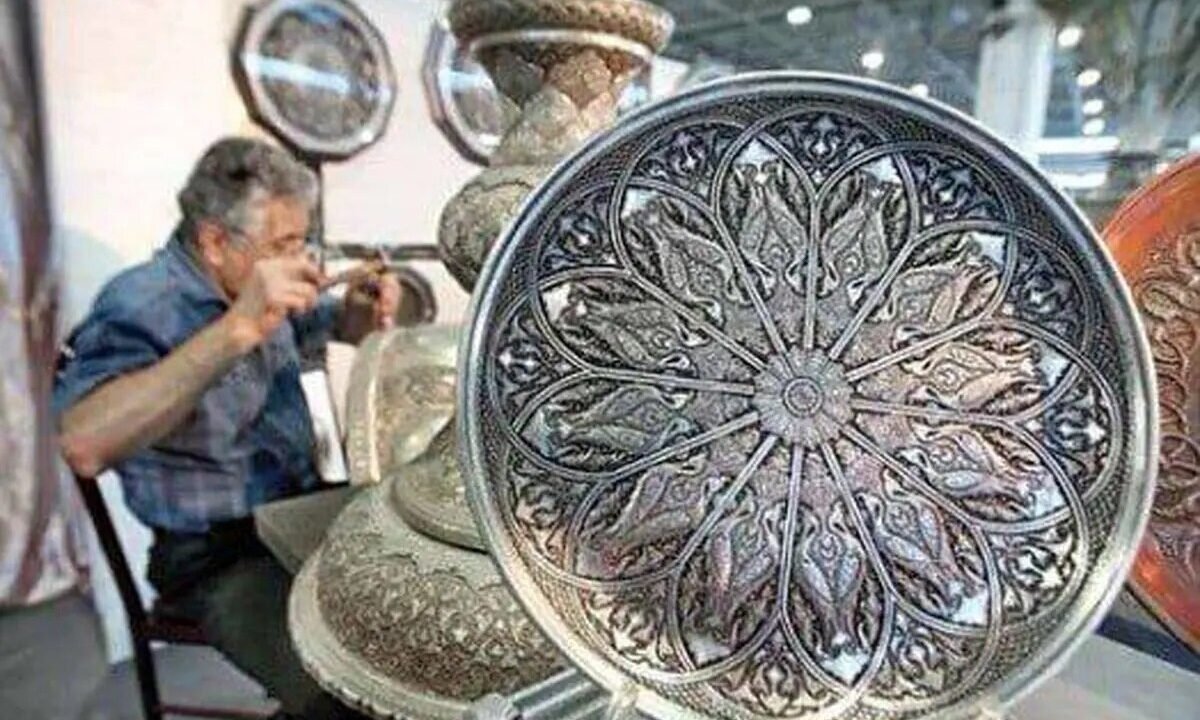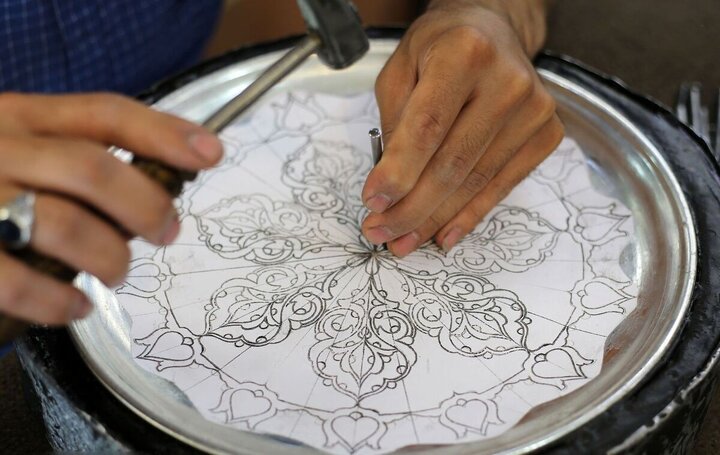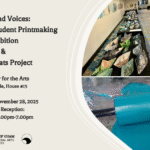
TEHRAN – The traditional art of Ghalamzani, the intricate craft of engraving beautiful designs on metals such as copper, brass, silver, and gold, has been recognized with an international Geographical Indication (GI). This prestigious recognition highlights Isfahan as the primary hub for this ancient craft.
Majd-al-Din Taj, the head of the Handicrafts Union of Isfahan, announced the news on Sunday, stating that this global registration is a major achievement for Isfahan’s artisans.
He noted that one of the longstanding concerns of the region’s craft community has been the efforts by other countries to claim certain traditional Iranian crafts and cultural assets as their own. Taj referenced similar disputes, such as with the game of Chogan (polo) and iconic figures like Rumi, an illustrious Persian poet of the 13th-century poet
“This recognition has been a priority for the Handicrafts Union of Isfahan,” Taj explained. “We prepared and defended the necessary proposals, with financial support provided by the Isfahan Chamber of Commerce to cover the costs involved.”
Taj elaborated on the process for GI registration, stating that a craft must first be recognized nationally with a geographical registration before being eligible for global recognition.
“In the past two and a half years, 20 handicraft fields from Isfahan province have received national geographical registrations. The union is now focused on pursuing international recognition for these crafts.”
With the international GI for Ghalamzani, this ancient art joins other globally recognized crafts from Isfahan, including Minakari (enamel work), Qalamkar (block printing on fabric), and Kashi Haft-Rang (seven-colored tilework). This marks the fourth craft from Isfahan to achieve this status.
Taj emphasized the significance of GI status for both artisans and the industry. “The first benefit is that it confirms the authenticity of the craft, ensuring that it is indeed created by our talented artists in Isfahan and Iran,” he said.
Taj added that the recognition also provides marketing and branding advantages, addressing a long-standing issue where countries like Turkey and some Persian Gulf states have sold Iranian handicrafts under their own names.
To further safeguard the authenticity of the artworks, the Handicrafts Union will provide artisans with hologram stickers to be affixed to recognized products. Additionally, the union’s website will feature details about each registered craft, including the artist’s name, further promoting the link between the craft and its origin in Isfahan.
GI is a name or sign used on products which corresponds to a specific geographical location or origin (e.g., a town or region). The use of a geographical indication, as an indication of the product’s source, is intended as a certification that the product possesses certain qualities, is made according to traditional methods, or enjoys a good reputation due to its geographical origin.
Persian expertise for engraving metal objects
Ghalamzani is the splendid art of engraving superb designs on various kinds of metals such as copper, brass, silver, and gold by the means of carving chisels.
It seems that the history of engraving has not been too far from the time when man discovered and used the metals. The ancient samples are being kept in the National Museum of Iran and other ones across the globe, some dating 3000 years.

Isfahan has long been the main hub for ancient expertise, where artists make a range of gold and silver dishes stunningly decorated with animals and scenes of hunting.
A typical artist meticulously uses a chisel and hammer to carve out every detail to engrave vivid scenes. Experts say the artistic movement of the engraver’s hand and the harmonized blows of the hammer and engraving tool will be finally led to creating a unique job.
However, the material will be decorated and embellished after it has already been shaped by another talented artist using a hammer and anvil.
Modern-day metal dish preparation is occasionally handled by machinery due to the difficult work and advancing age of the masters.
Following the artist’s completion of the pattern drawing, the back of the piece is coated with tar and baked along with other materials. Next, the main lines of the design are traced using carving chisels. From this point on, it may take the artist weeks or even months to complete the design, which was once just an idea in his head.
Every piece is meticulously made, requiring the artists to have a great deal of skill, talent, and patience.
Many materials and tools, including chisels, hammers, instruments made by hand, etc. are used by the artisans to emboss and engrave the most intricate and complex designs on different kinds of metals.
Various natural scenes, human and animal forms, floral and plant patterns, hunting grounds, etc. Some of the numerous beautiful images that have been meticulously hand-carved into various types of Ghalamzani pieces include and.
In addition to applying heat, other techniques used to create these works of art include the use of waxes, dyes, sanding, and polishing. The beautiful Ghalamzani handicrafts come in the form of ornamental trays, plates, vases, pitchers, and other utensils.
AM









